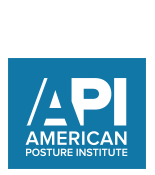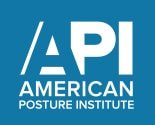
Why the Posture Paradigm is leading the Healthcare Curve
Poor posture has literally become an epidemic in our society. The far majority of people present with advanced postural degeneration, and yet very few practitioners are trained to properly take care of them.
To put it into perspective, check out these statistics!
- 80% of people in the United States suffer from back pain at some point in their lives and will seek necessary treatment for it (American Chiropractic Association).
- Back pain is the second most common reason for visits to the doctor’s office (American Chiropractic Association).
- The Global Burden of Disease Study showed that low back pain is the leading cause of disability and that osteoarthritis is one of the fastest growing conditions.
- The total cost of treating low back pain has superseded $100 billion per year (Crow & Willis, 2009).
- The total incremental annual cost of healthcare due to musculoskeletal pain including lost productivity, days of work missed, hours of work lost, and lower wages is up to $600 billion (Gaskin and Richard, 2011).
$600 billion!
The cost of treatment of painful musculoskeletal conditions such as back pain is more expensive than the annual cost of chronic diseases such as diabetes, cancer, and heart disease.
The really worrisome thing is that poor posture is not just affecting adults. Did you know that currently 65% of our children present with back pain due to postural distortion patterns?
What happens to children when they experience pain during the developmental stages of life? They avoid movement, gain weight, lose confidence, and become depressed adults with advanced postural collapse.
The Posture Paradigm
Knowing what you know now, you tell me, do you think it is important to focus on posture in your practice?
Do you see the impact you can make on your community?
Poor postural design is a societal epidemic with devastating health effects. The physiologic effects of postural distortion patterns result in decreased organic function and a decline in biologic sustainability of the human race.
Posture is the answer. It is a blue ocean market opportunity for healthcare professionals.
Researched consumer behaviors tell us that patients seek healthcare services for these three reasons… they want to look better, they want to move better, and they want to feel better. Posture is the ONLY healthcare strategy in the world to fulfill all three of these consumer needs. It makes perfect sense that patients would choose Posture Experts over general healthcare practitioners.
Plus, every healthcare practitioner worldwide, from all healthcare backgrounds agrees that proper postural design is a fundamental aspect of optimal health and wellbeing.
Posture makes sense.
It makes sense to patients, and it makes sense to healthcare professionals. Let’s take a look at how postural correction improves patient compliance and doctor to patient communication.
Patients understand posture, it is a word that makes sense to them and that they already associate with their health. When delivering a doctor’s report it is vitally important to speak to patients in words and terms that they understand and to support their belief system that proper posture is fundamental to health and wellbeing. When you do, expect to see improved patient compliance and retention.
Certified Posture Experts are patient-centered and results focused. They have specialized methods that render evidence-based results immediately pre and post treatment.
Research demonstrates that referrals to “Specialists” from general practitioners doubled from 1999-2009. With the pressure of making patients happy, and the consequences of “failure to refer” with complex cases, more and more general doctors are referring patients to specialists (Barnett et al., 2012).
The impact of the postural paradigm will be huge, and we are glad you are a part of it because the health of our society depends on it. Our belief at the American Posture Institute is that with 10,000 Certified Posture Experts across the globe we can shift the direction of healthcare to improve postural design and human function.
Are you ready to join us on this mission and stay ahead of the healthcare curve?

















